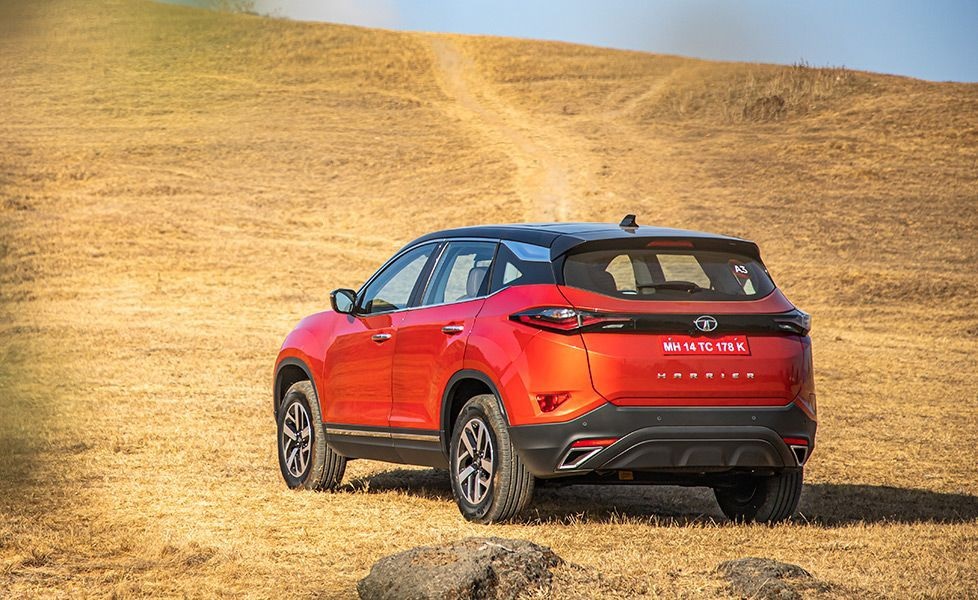Tata Harrier vs MG Hector Comparison
The Tata Harrier has been one of the most talked about SUVs in recent times, for it is built on the OMEGA Arc platform and is derived from Land Rover’s D8 architecture that happens to underpin a lot of Range Rovers. It doesn’t only impress with its butch appearance, it is also feature-packed, drives really well and offers lots of comfort. But can it withstand the blows from British automotive brand – MG’s Hector? We drive the Harrier and compare it with what is easily becoming an equally popular SUV among buyers looking for the latest technology.
Design
Of the two, we’ll admit that the Harrier is the one that plays sweet tunes on our heart strings, for it stays true to its H5X Concept’s design language, and we’re not complaining. The Harrier looks very masculine with its mighty flared wheel arches, high-set bonnet, slender LED DRLs, a floating roof and petal-shaped tail lights at the rear. But if you look closer, there’s absolutely no chrome visible on the SUV – and now, isn’t that something the Indian consumer loves? The Hector, on the other hand, has lots of it. The Hector has good presence too, but it is more slab-sided, and a little more sharp-edged in comparison. But you’ll notice that slender LED DRLs up-front are now becoming a trend. The Hector’s chrome grille is sure to lure Indian buyers.
Interiors
The Tata Harrier sports tan brown seats, a floating touchscreen and a wooden garnish on the dashboard. It gets perforated seats and the knurled chrome finish along with plastics in glossy piano black look excellent. The seats are large and comfortable. The second row gets rear AC vents in the B-pillar, and the seats here offer ample under-thigh support with lots of headroom and legroom on offer. The Hector, on the other hand, gets an all-black theme with leather seats. The massive touchscreen in the middle is almost Volvo-like and there are lots of stowage spaces available. Visibility from the Hector is good, since you sit a bit higher in this SUV. That huge panoramic sunroof makes it feel like a roomier place, and the second row of seats lack under-thigh support but there is sufficient legroom on offer. Among the two, the Hector has the bigger boot.
Features
Both SUVs are feature-loaded. You get automatic climate control, touch screen displays, leather upholstery, cruise control, keyless entry, push button start, ABS with EBD, ESP and TCS. The Hector gets front and rear sensors, a 360 camera, find-my-car, geo-fence and six airbags, while the Harrier boasts of hill descent, cooled glove boxes and an off-road mode. The Hector also gets a powered tail gate and voice commands that include saying ‘Hello MG‘ to help you navigate to a destination.
Performance & Handling
Both SUVs use a 2.0-litre diesel engine that is paired to a 6-speed manual gearbox. While the Harrier’s updated Kyrotec engine makes 167bhp and 350Nm of torque, the Hector produces 167bhp. The Harrier has a strong mid-range, making it more than sufficient for overtaking. And the clutch is light, making it easy to use in traffic. The Hector has a noisy engine, but sound insulation is better on the Hector. The engine on the Hector loves to rev and doesn’t feel like it’s running out of steam even at high speeds. However, it does not get the driving modes that you get on the Harrier: Eco, City and Sport). The Hector’s steering is light, while the Harrier’s feels a little heavier in comparison. But you feel more connected to the Harrier, and it inspires confidence when making quick direction changes. And the Hector has a soft suspension setup, which leads to a lot of body roll. The body control on the Harrier feels better, and both SUVs soak in bumps effortlessly.
Opinion
No doubt, the Harrier is the more SUV-ish of the two with its massive road presence. It has a lot of space and comfort on offer and rides and handles remarkably well too, but it’s a bit too noisy, and lacks many features that the Hector has. The Hector may look a little weird at first, but it scores well across most parameters and will make for a great chauffeur-driven SUV too.




